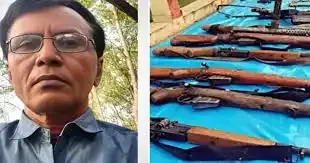Shopping cart
Your cart empty!
Terms of use dolor sit amet consectetur, adipisicing elit. Recusandae provident ullam aperiam quo ad non corrupti sit vel quam repellat ipsa quod sed, repellendus adipisci, ducimus ea modi odio assumenda.
Lorem ipsum dolor sit amet consectetur adipisicing elit. Sequi, cum esse possimus officiis amet ea voluptatibus libero! Dolorum assumenda esse, deserunt ipsum ad iusto! Praesentium error nobis tenetur at, quis nostrum facere excepturi architecto totam.
Lorem ipsum dolor sit amet consectetur adipisicing elit. Inventore, soluta alias eaque modi ipsum sint iusto fugiat vero velit rerum.
Sequi, cum esse possimus officiis amet ea voluptatibus libero! Dolorum assumenda esse, deserunt ipsum ad iusto! Praesentium error nobis tenetur at, quis nostrum facere excepturi architecto totam.
Lorem ipsum dolor sit amet consectetur adipisicing elit. Inventore, soluta alias eaque modi ipsum sint iusto fugiat vero velit rerum.
Dolor sit amet consectetur adipisicing elit. Sequi, cum esse possimus officiis amet ea voluptatibus libero! Dolorum assumenda esse, deserunt ipsum ad iusto! Praesentium error nobis tenetur at, quis nostrum facere excepturi architecto totam.
Lorem ipsum dolor sit amet consectetur adipisicing elit. Inventore, soluta alias eaque modi ipsum sint iusto fugiat vero velit rerum.
Sit amet consectetur adipisicing elit. Sequi, cum esse possimus officiis amet ea voluptatibus libero! Dolorum assumenda esse, deserunt ipsum ad iusto! Praesentium error nobis tenetur at, quis nostrum facere excepturi architecto totam.
Lorem ipsum dolor sit amet consectetur adipisicing elit. Inventore, soluta alias eaque modi ipsum sint iusto fugiat vero velit rerum.
Do you agree to our terms? Sign up

In a major development for India’s internal security, Mallojula Venugopal Rao, widely known by his nom de guerre Bhupathi, the top Maoist commander and strategist behind the 2010 Dantewada ambush, has surrendered along with more than 60 of his cadres in Gadchiroli district, Maharashtra.
The surrender of Bhupathi, a senior politburo member of the Communist Party of India (Maoist), is being hailed as a significant victory for security forces and a symbolic blow to the Naxal insurgency, which has plagued central India for decades. The move underscores the government’s persistent efforts to dismantle extremist networks through sustained operations and negotiation initiatives.
Bhupathi was reportedly the architect of the 2010 Dantewada ambush, which tragically claimed the lives of 76 CRPF personnel, one of the deadliest attacks on Indian security forces in recent memory. Known for his strategic planning and operational expertise, he played a pivotal role in orchestrating several high-profile Naxal attacks across Chhattisgarh and surrounding states.
Sources indicate that internal rifts within the Maoist ranks and sustained counter-insurgency operations orchestrated by security forces in Gadchiroli contributed heavily to the surrender. Under the guidance of Union Home Minister Amit Shah, security agencies intensified operations in Maoist strongholds, cutting off logistical support and isolating senior commanders like Bhupathi.
The Union Home Ministry welcomed the surrender, stating that efforts continue to ensure the eventual end of Naxalism in India, emphasizing the government’s strategy of combining security operations with rehabilitation programs for surrendered cadres.
The exit of Bhupathi marks a turning point in the fight against Naxalism, demonstrating that even high-ranking leaders of the insurgency can be persuaded to lay down arms. Experts suggest that such high-profile surrenders not only weaken operational capabilities but also boost morale among security forces and local communities affected by decades of violence.
As Bhupathi and his cadre join the mainstream under government rehabilitation schemes, authorities hope this will encourage other Naxal leaders to reconsider their stance, paving the way for a gradual reduction in Maoist activity across central India.
30
Published: Oct 15, 2025